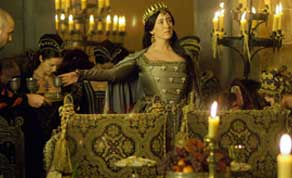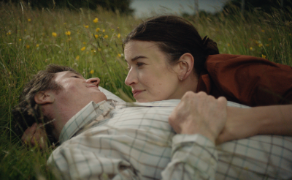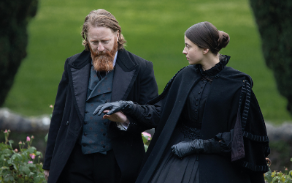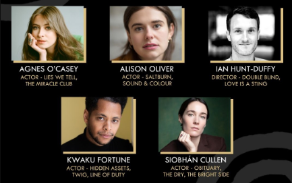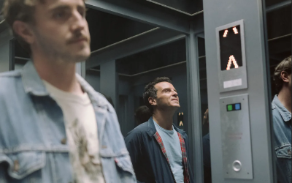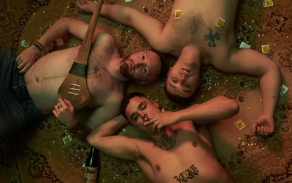Working on-set in the art department can be a gruelling and sometimes painstaking process. Productions that seek to build a sense of time or reflect historical accuracy often have extraordinary levels of detail across sets, decoration and props, which require long days and assiduous attention to every square inch of space.
However, it is also an incredibly rewarding, interesting and creative aspect of working in the industry, and one woman who knows more than most about this, is June Connon. Her first feature was ‘Michael Collins’, and since then she has worked as a set dresser, propmaster and as a chargehand on over 30 films, including ‘Syriana’, ‘The Omen’, and has recently just finished ‘A Good Day to Die Hard’ with Irish director John Moore.
She was also worked on TV series cited for achievements across art and production design, including nearly 40 episodes of ‘The Tudors’ and ‘Camelot’. Here she tells us about the process of dressing props and the most exciting parts of her job.
Generally, working across props or in the art department, on set, my day begins with... a very early start. We usually have a half hour to an hour pre-call. As we work off a truck we need to unload our trollies and equipment before we can even start to sort the props for the day. There is normally a team of two or three of us, so each of us has a job.
I read the script pages for the day and put all the scripted props in the set box etc. Previous to this I would have gone through the schedule with the propmaster and would have all scripted props given to me and agreed by the director. The other standbys are busy getting tools, chairs, drinks, food, candles, horse gear, arms and whatever is required for the day. For example on ‘The Tudors’ we could go through up to 2,000 candles in a day, and these all need to be double checked for numbers etc.
The job can vary so much that all areas need to be covered. We go on to the set and with the designer and propmaster check all scripted action for the day. Then check the day with the first AD and director to make sure we have everything, and there are no additions. Our job can cross over into many departments, with action etc, that communication is very important. You don’t want to get caught off guard, so cross checking with everyone is important. To hold up a shoot is not good!
The most common misconception people have about my job
is... that it’s glamorous. I feel very privileged to work in this business but the hours and pressure can be very trying. 6 x16 hour days can take it out of you.
The practical tip I would give to somebody trying to break into
the film industry in the art department would be to... be prepared to listen and learn. You start as a trainee and no matter what college or skill you may have, working hands on is a lot different.
The greatest person/help/influences in my career who/which helped me get where I am today have been… the people whom I can thank, the propmaster I work for a lot is Paul Hedges. His skill and patience is amazing. Crispian Sallis on ‘The Tudors’ and ‘Camelot’ was a very brilliant set decorator and his eye for detail was amazing. Tom Sanders’ models that we shot on were so detailed. Tom Conroy with his huge realistic sets that made you feel like you were there. Anyone who makes you feel like you’re back in that time has a gift and pushes you to work harder.
The best thing about working where I do is.... that no job is ever the same. It’s like a gypsy lifestyle, always changing and on the move. Watching what can be created by actors acting is amazing. To work in this job is so exciting and I don’t know any other job that you can be blown away with adrenalin and feel so alive.
Websites you should surf/books you should read/art department and props work you should use and observe for inspiration are… when I get a job I have to figure what era we are in, for example as in 1600s or modern day etc. What would these people use? Also a character breakdown from the director helps, and then I usually surf the net for reference and books. Then present mood boards or a show-and-tell for the director and designer to select.
Click below for previous 'Making the Cut' interviews:
Nathan Mateer: ‘Macropolis’ Animator
Lorraine Glynn: ‘Albert Nobbs’ Hair Stylist
Poll Moussoulides: Dialogue Coach Poll
Roisin Derrane: 'Deception' Makeup Artist
Lorna Marie Mugan: ‘Ripper Street’ Costume Designer
Donal O’Farrell: ‘Ek Tha Tiger’ Stunt Man
Ray Harman: ‘Love/Hate’ Composer
Suzie Lavelle: 'The Other Side of Sleep' DoP
Nathan Nugent: 'What Richard Did' Editor
Louise Kiely: 'What Richard Did' Casting Director
Mark Geraghty: 'Ripper Street' Production Designer
Ronan Hill: 'Game of Thrones' Sound Recordist


